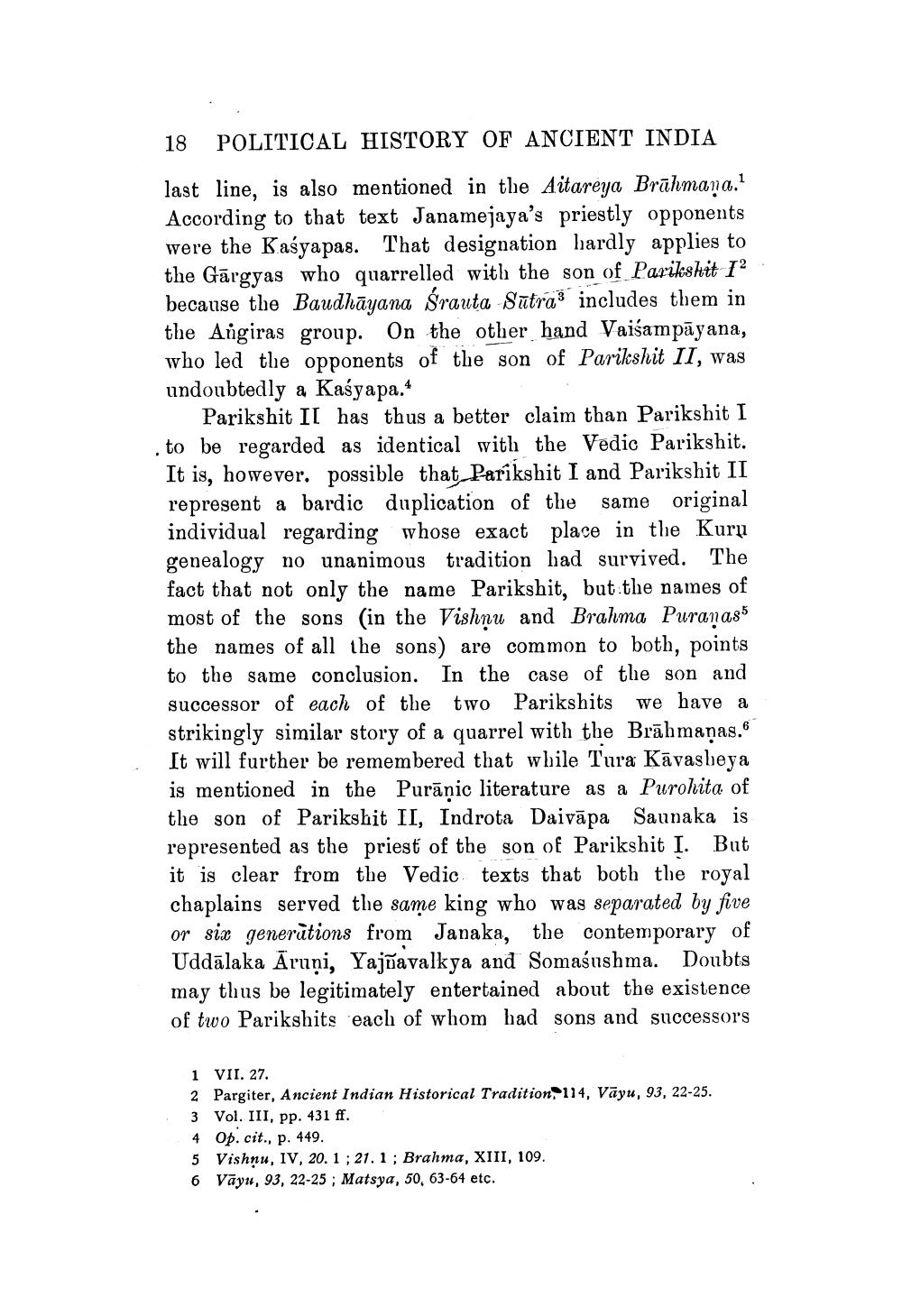________________
18 POLITICAL HISTORY OF ANCIENT INDIA last line, is also mentioned in the Aitareya Brāhmana." According to that text Janamejaya's priestly opponents were the Kaśyapas. That designation hardly applies to the Gārgyas who quarrelled with the son of Parikshit 12 because the Baudhāyana Srauta Sutra: includes them in the Angiras group. On the other hand Vaišampāyana, who led the opponents of the son of Parikshit II, was undoubtedly a Kaśyapa.
Parikshit II has thus a better claim than Parikshit I . to be regarded as identical with the Vedic Parikshit. It is, however, possible that Parikshit I and Parikshit II represent a bardic duplication of the same original individual regarding whose exact place in the Kuru genealogy no unanimous tradition had survived. The fact that not only the name Parikshit, but the names of most of the sons (in the Vishnu and Brahma Puranas5 the names of all the sons) are common to both, points to the same conclusion. In the case of the son and successor of each of the two Parikshits we have a strikingly similar story of a quarrel with the Brāhmaṇas. It will further be remembered that while Tura Kāvasbeya is mentioned in the Purāņic literature as a Purohita of the son of Parikshit II, Indrota Daivāpa Saunaka is represented as the priest of the son of Parikshit I. But it is clear from the Vedic texts that both the royal chaplains served the same king who was separated by five or six generùtions from Janaka, the contemporary of Uddālaka Āruņi, Yajñavalkya and Somašushma. Doubts may thus be legitimately entertained about the existence of two Parikshits each of whom had sons and successors
1 VII. 27. 2 Pargiter, Ancient Indian Historical Tradition, 114, Vāyu, 93, 22-25. 3 Vol. III, pp. 431 ff. 4 Op. cit., p. 449. 5 Vishnu, IV, 20.1 ; 21. 1 ; Brahma, XIII, 109. 6 Vāyu, 93, 22-25; Matsya, 50, 63-64 etc.




